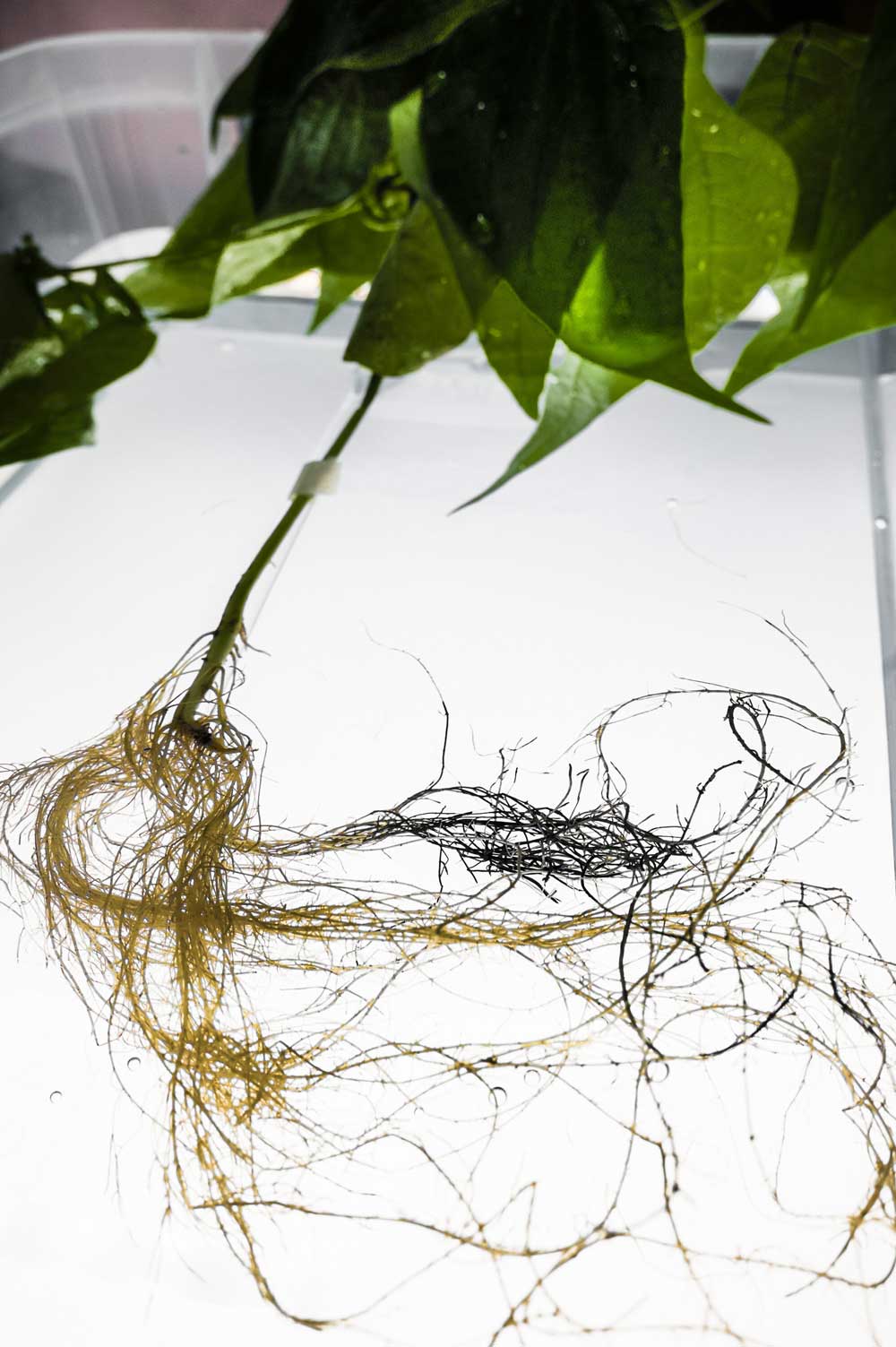In 2015, Laboratory of Organic Electronics has shown us that circuits can be fabricated in the vascular tissue of plants.
In 2021, researchers of Linköping University have shown us that roots of a plant can become electrically conducting and is capable to storing energy in its roots.
The Laboratory of Organic Electronics has used a rose plant for their experiment. The conducting polymer was soaked by the rose plant’s vascular system to form electrical conductors which we primarily use to make transistors.
Linköping University researchers has used bean plants for their experiment. They have watered the plants with a solution which has conjugated oligomers in it.
In 2017, Laboratory of Organic Electronics has done another experiment where they have shown us conjugated oligomer and ETE-S, can polymerise in a plant and form conductors, which we can use to store energy.
ETE-S is a trimer, that the researchers has used in a plant because it is polymerised by a natural process. In the root of the plant, a series of polymer is formed and that causes the complete root system to function as a network of readily accessible conductors.
With a conductivity of approximately 10 Siemens per centimetre, the root of the bean plant remained electrically conducting for four weeks.
They have also planned to build a root-based supercapacitor where the roots will function as electrodes in the time of charging and discharging.
The new research of root-based supercapacitor had worked well than the pervious plant-based supercapacitors, as the root-based experiment tore 100 times more energy than the other one.
The bean plant is also alive after the experiment, so, the researchers can use it for further experiment. The plant has developed a more complex root system after the experiment.
This research was significant from development of sustainable energy storage point of view. This also highlighted the new biohybrid systems like functional materials and composites.

